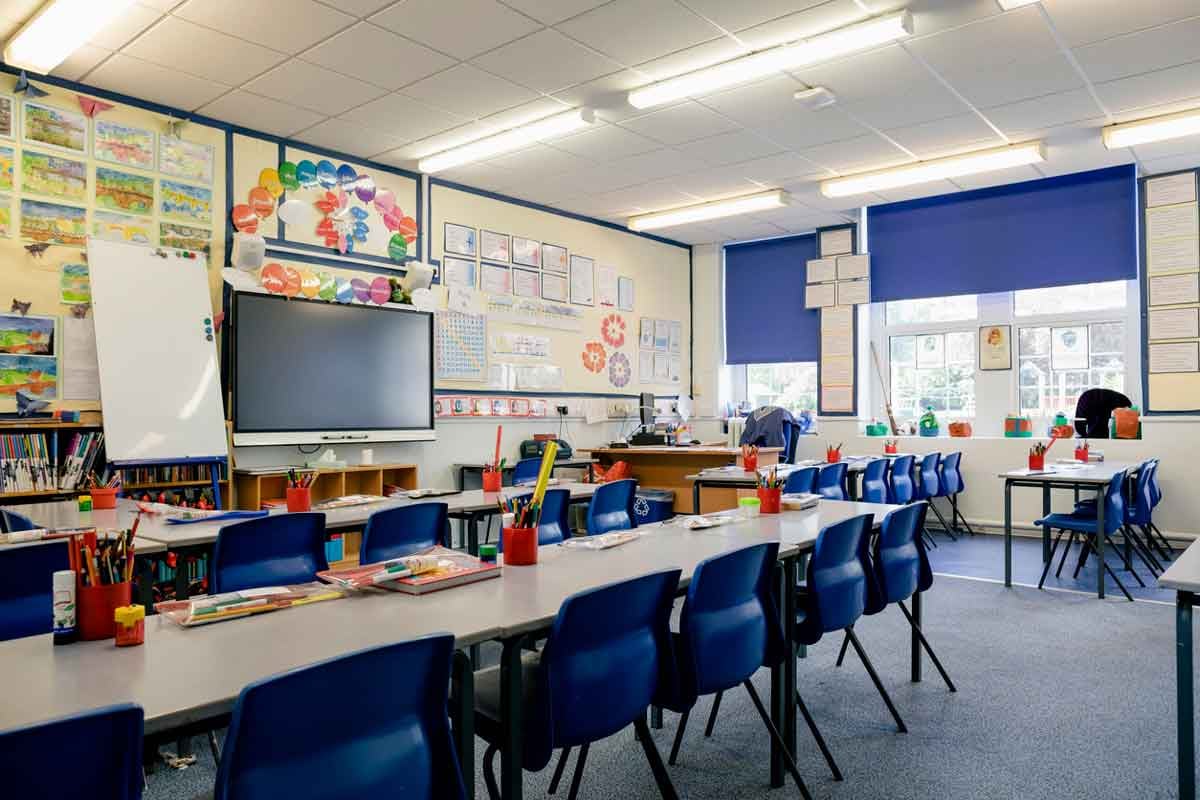
Working with educational institutions all over, at Kid Spark Education, we’re always thrilled to see engaged and thriving elementary school STEM classrooms. That’s because for us, STEM isn't a buzzword— it's a powerful way to nurture students' natural curiosity, build confidence inside the classroom and out, and foster collaborative problem solving.
As you think about your own STEM classroom, it’s easy to wonder— what does an engaged and thriving STEM classroom look like? We sat down with our team and brainstormed to find out. What came out of it was these 5 key features on what a truly engaged classroom looks like. Read the full blog to see if your classroom has them all:
1. Students are Empowered to Lead
While mentorship is a key part of Kid Spark STEM programs, we believe that elementary school students should truly be in the driver's seat of their STEM learning. By providing tools and frameworks with our STEM labs, students take responsibility for creating their own solutions for each engineering challenge. From brainstorming to designing, experimenting to redoing, students really absorb concepts of science, technology, engineering, and math by seeing the concepts in action.
Because our elementary and middle school programs are comprised of progressive units of instruction that cover a range of STEM concepts, these labs can meet any student where they are year after year. As they progress, they can be empowered to have deeper understanding of the concepts and grow their love of STEM.
2. Groups are Working and Collaborating Together
Collaboration is not only a key part of adult life, but in developing important social skills as a part of child development. According to the National Education Association, “Collaborative learning has been shown to not only develop higher-level thinking skills in students, but boost their confidence and self-esteem as well. Group projects can maximize educational experience by demonstrating the material, while improving social and interpersonal skills. Students learn how to work with various types of learners and develop their leadership skills.”.

That’s why collaboration is a key part of our STEM curriculum at Kid Spark Education. By working together on engineering challenges, students can teach each other high level concepts and grow confidence in all of their educational outcomes. This confidence and skill in working with other learners will help students succeed through their educational and professional lives.
3. There are Opportunities for Convergent and Divergent Learning
Every student learns differently. Some students do better with hands-on learning and some do better by listening or seeing. That’s why it’s important to offer both convergent and divergent learning when teaching STEM. This structure is what makes Kid Spark Education’s programming work so well, by making sure lessons reach every student.
Convergent learning starts by instructors explaining and talking through the STEM concepts that the STEM lab will be covering. Divergent learning is when students break out into groups and test out the concepts hands-on. By offering both types of learning, at Kid Spark Education, we make sure we can reinforce the educational concepts for every type of learner. By learning both of these ways and working with learners that learn different ways, students will come out with a stronger understanding on how they can use STEM to change the world.
4. Students Can Explain How They Are Using STEM Concepts
Most importantly, it’s crucial that students understand how they are solving problems with science, technology, engineering, and math. This ensures that they are understanding the learning outcomes and that they can actually combine these concepts in order to solve all sorts of problems. Beyond that, all the concepts of STEM are connected and all support each other. Learning each aspect of STEM and how each of these disciplines cross-pollinate allows students to grow and have a lifetime love of learning. As the National Council of Supervisors of Mathematics and the National Council of Teachers of Mathematics find in their report on mathematics in STEM education,
“A well-designed and effective STEM program is going to have a strong mathematics component, a strong science component, and many opportunities to use mathematical and scientific thinking, reasoning, and modeling across disciplines to tackle real problems that involve any or all of the STEM fields. Thus, mathematics and science as disciplines, as well as integrative activities that cross the STEM fields, should be part of a comprehensive STEM program.”
Being able to combine and understand these concepts will only make sure they are successful in whatever they choose to do with their lives. Understanding and being able to communicate how things work and cross-pollinate will make them bold leaders that can truly change our world.
5. All Students Are Involved and Excited to Solve Problems
What we most love to see in our Kids Spark STEM education programs in both elementary school and middle school is students truly excited to learn. In our Elementary and Middle School programs, students jump right into the shoes of a real engineer as they explore applied mathematics, mechanical & structural engineering, and robotics & coding. By focusing on concepts such as how to make things strong, how to make things move, and more— students gain confidence in their ability to author with technology to solve real-world problems and design new solutions.

Seeing this confidence as they build articulated components, learn engineering concepts, try rotary motion, experiment with coding, and more, we’re constantly amazed at the solutions students are able to create. By making sure that all students are engaged, this is also ensuring that we are closing the opportunity gap. At Kid Spark Education, we believe that every student deserves access to STEM education that can change their lives. We help elementary and middle schools disrupt this pattern of educational inequity by providing STEM education early and consistently to all their students. By giving students of all backgrounds and abilities an equal chance to learn and love STEM, we are nurturing a next generation of successful professionals, bold thinkers, and passionate leaders.
Want to Bring STEM Learning to Your Elementary Classroom?
Of course, this is just an overview of what we love seeing from schools that have brought Kid Spark Education to their classrooms. We believe that just like reading, STEM concepts are an essential tool for understanding and interacting with the world. Kids who are “STEM fluent” learn to think critically, solve creatively, and engage fearlessly with the world around them. By providing tools to support STEM education, from toddler to teen to teacher, we kids develop the courage to imagine a better world and the skills to create it. With Kid Spark, students learn to see like designers and think like engineers. They grow up ready to succeed in a tech-driven twenty-first century — and ready to change their world.
If you’re ready to bring Kid Spark Education to your classroom, we’d be happy to help. To get started, purchase a program here. If your public elementary srves a high percentage of underserved students, come take a look at our STEM Equity Grants program and see how you can help bring the power of STEM education to your school. If you need help with grants or other solutions to help bring the power of STEM education to your classroom, you can learn more here.
.png?width=1270&height=453&name=Copy%20of%20Kid%20Spark%20Logo%20(Horizontal%20-%20Full%20Color).png)